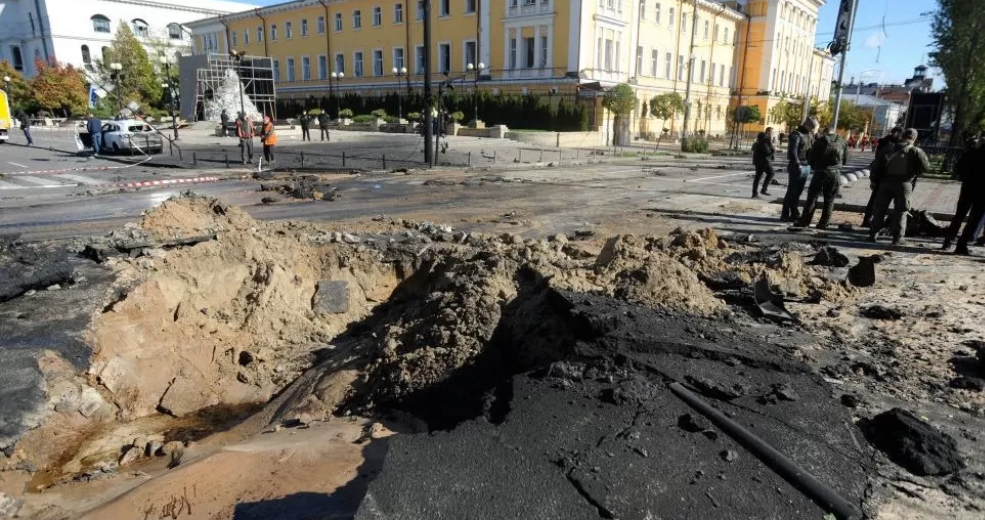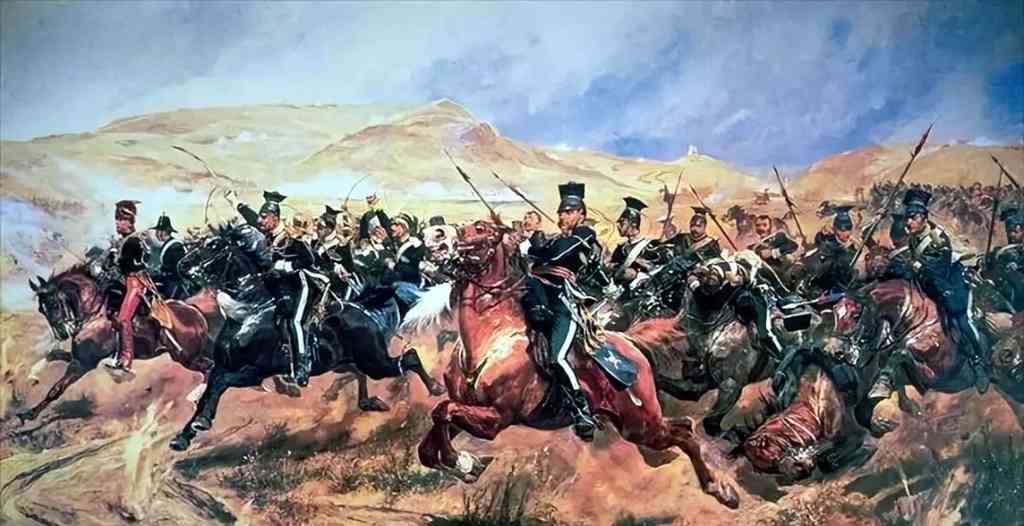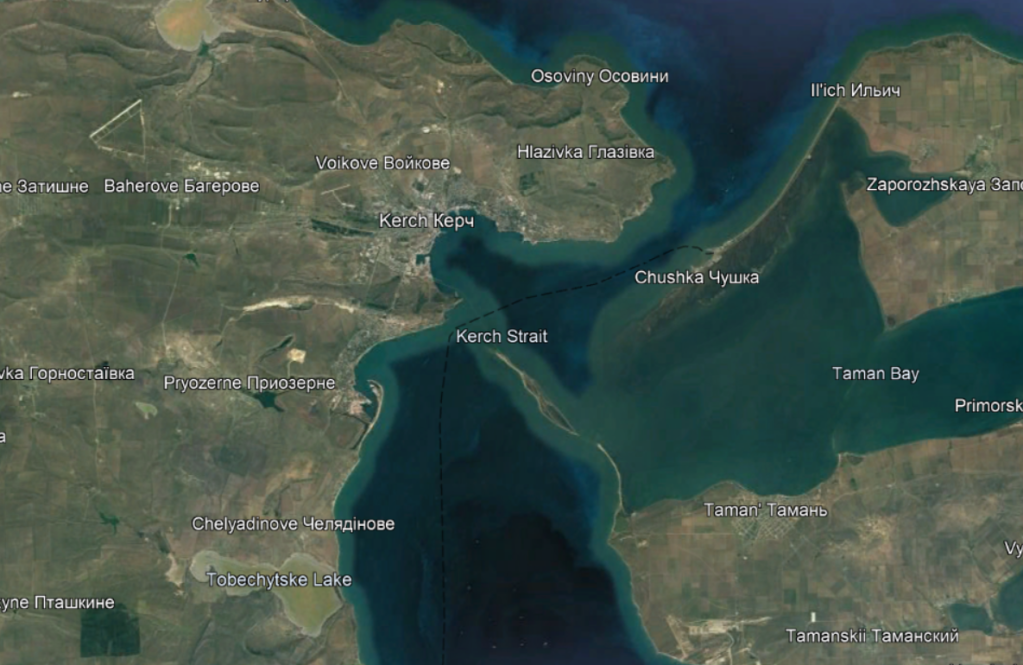Russia has launched a series of indiscriminate attacks across Ukraine, including the first direct targeting of Kyiv for several months. It follows an explosion on a key bridge linking the seized Crimean Peninsula with mainland Russia, an event President Vladimir Putin has blamed on Ukrainian ‘terrorists’. At least 14 people have been killed in the Russian attacks.

Opened in 2018 – 4 years after Russia’s illegal annexation of Crimea – the bridge crosses the Kerch Strait, connecting Crimea with the Krasnodar Krai region in Russia’s North Caucuses. It has been critical for moving supplies, ammunition and military personnel from Russia into southern Ukraine. Not only is the bridge of strategic and symbolic importance, but it also helps plug a gap between the Black Sea and the Sea Azov, the latter giving access to interior Russia.
Prior to the Russian annexation of 2014, Crimea was probably best known for the Yalta Conference held by the ‘Big Three’ of Churchill, Stalin and Roosevelt in February 1945 or, even more famously, the Crimean War of 1853-1856.
Fought between Russia and an Anglo-French alliance in support of the Ottoman Empire, the Crimean War was the first to receive almost instantaneous mass media attention, with reports from the front communicated via telegraph and published in newspapers, with evocative use made of the new medium of photography. Railways, ironclad warships and naval shells were just some of the other inventions of modern warfare debuting in Crimea.
After Russian advances in the Balkans were repulsed by stout Ottoman defence in 1853, Anglo-French naval forces entered the Black Sea at the beginning of 1854. They defeated the Russians at the Battle of the Alma, before indecisive encounters at Balaklava and Inkerman. The Russians were eventually forced to retreat to the fortress of Sevastopol, which the Allies laid siege to during 11 months of bitter fighting (October 1854-September 1855), compounded by awful weather and rampant disease.

Modern warfare was not for the feint-hearted:
Now, if you have strong nerves, go through the doorway on the left: that is the room in which wounds are bandaged and operations performed. There you will see surgeons with pale, gloomy physiognomies, their arms soaked in blood up to the elbows, deep in concentration over a bed on which a wounded man is lying under the influence of chloroform, open-eyed as in a delirium, and uttering meaningless words which are occasionally simple and affecting. The surgeons are going about the repugnant but beneficial task of amputation. You will see the sharp, curved knife enter the white, healthy body; you will see the wounded man suddenly regain consciousness with a terrible, harrowing shrieked cursing; you will see the apothecary assistant fling the severed arm into a corner; you will see another wounded man who is lying on a stretcher in the same room and watching the operation on his companion, writhing and groaning less with physical pain than with the psychological agony of apprehension; you will witness fearsome sights that will shake you to the roots of your being; you will see war not as beautiful, orderly and gleaming formation, with music and beaten drums, streaming banners and generals on prancing horses, but war in its authentic expression – as blood, suffering and death (Tolstoy, pp. 191-2).

The Americans would find out less than a decade later that battle tactics had not kept pace with the technology of war. The resulting carnage was unimaginable.
As Tolstoy and thousands of others awaited death at Sevastopol, in May 1855 the Allies set their sights on Kerch. 60 ships carrying some 15,000 troops landed at this easternmost settlement of the Crimea, in a bid to open a new front against Russia and disrupt its supply lines. Anglo-French ships proceeded through the Kerch Strait into the Sea of Azov, wreaking havoc with Russia’s logistics and destroying a major military depot at the strategic hub of Taganrog in June. Dozens of other coastal fortifications and bases were razed.

Attacked from all sides, and with the motherland now under threat, the Russian resistance at Sevastopol gradually weakened until a decisive French attack at Fort Malakoff in September 1855 broke the siege in the Allies’ favour. Russia limped on until March 1856 when Moscow sued for an ultimately unfavourable peace.
The strategic and military significance of Crimea, jutting out as it does into the heart of the Black Sea, makes it a Russian obsession. That it has been the object of national humiliation, whether through defeat in the Crimean War or through its incorporation into an independent Ukraine after the collapse of the Soviet Union, seems only to strengthen Putin’s determination to maintain and strengthen the peninsula after it was ‘reclaimed’ in 2014.
Any vulnerability triggers immediate concern and paranoia within an already-paranoid Kremlin. Putin’s reaction to the weekend’s bridge incident is a case in point. As his reckless war goes from bad to worse, he foresees the loss of this great ‘Russian’ asset that he so gloriously seized back. As Kyiv continues to make gains in Ukraine’s southeast, hopes have been raised that Crimea too can be liberated. The Kerch Strait is not only a vital throughway for Russia but Ukraine too. Since its loss of Crimea, the port city of Mariupol (itself under Russian occupation) is cut off from the Black Sea, with the Strait acting as a Russian chokepoint to dictate the flow of ships and supplies.

The focus of the Ukraine War in recent months has been on the oblasts of Donetsk and Luhansk, of Kherson and Zaporizhzhia, all illegally annexed by Russia, with sham referendums to boot. Do not be surprised to see Crimea, until recently a seemingly unobtainable target for Kyiv, return towards the top of the agenda. For Putin and Russia, a repeat of the 1850s disaster is not inconceivable given how the war has been managed to date.
Yet beware the cornered tiger. With his nuclear sabre-rattling becoming louder in recent weeks, there is little hope that Putin will concede defeat without resort to mass destruction, slim prospects of his immediate ouster. The Crimean War helped set the scene for the Tsarist decline that ended in the Bolshevik’s successful revolution of 1917. Where will Putin’s devastating Ukrainian venture lead Russia, and the rest of Europe, in the coming years?
Additional Source
Tolstoy, L. The Cossacks and Other Stories (2006)
